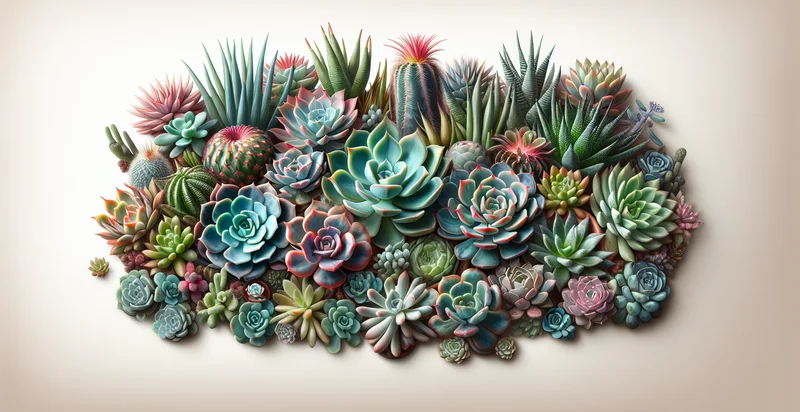Identify succulent type
using AI
Below is a free classifier to identify succulent type. Just upload your image, and our AI will predict what type of succulent it is - in just seconds.

Contact us for API access
Or, use Nyckel to build highly-accurate custom classifiers in just minutes. No PhD required.
Get started
import nyckel
credentials = nyckel.Credentials("YOUR_CLIENT_ID", "YOUR_CLIENT_SECRET")
nyckel.invoke("succulent-type", "your_image_url", credentials)
fetch('https://www.nyckel.com/v1/functions/succulent-type/invoke', {
method: 'POST',
headers: {
'Authorization': 'Bearer ' + 'YOUR_BEARER_TOKEN',
'Content-Type': 'application/json',
},
body: JSON.stringify(
{"data": "your_image_url"}
)
})
.then(response => response.json())
.then(data => console.log(data));
curl -X POST \
-H "Content-Type: application/json" \
-H "Authorization: Bearer YOUR_BEARER_TOKEN" \
-d '{"data": "your_image_url"}' \
https://www.nyckel.com/v1/functions/succulent-type/invoke
How this classifier works
To start, upload your image. Our AI tool will then predict what type of succulent it is.
This pretrained image model uses a Nyckel-created dataset and has 20 labels, including Agave, Aloe, Burro'S Tail, Cactus, Crassula, Echeveria, Faux Succulent, Fleshy Succulent, Graptoveria and Haworthia.
We'll also show a confidence score (the higher the number, the more confident the AI model is around what type of succulent it is).
Whether you're just curious or building succulent type detection into your application, we hope our classifier proves helpful.
Related Classifiers
Need to identify succulent type at scale?
Get API or Zapier access to this classifier for free. It's perfect for:
- Plant Retail Inventory Management: Implement the succulent type identifier to streamline inventory management for gardening and plant retail stores. By accurately classifying different types of succulents, retailers can optimize stock levels, reduce resource waste, and enhance sales forecasts based on specific customer preferences.
- E-commerce Product Recommendations: Utilize the false image classification function on e-commerce platforms to improve customer shopping experiences. With accurate identification of succulent types in images, the system can suggest complementary products or accessories, leading to increased average order values and customer satisfaction.
- Social Media Engagement: Apply the succulent type identifier to enhance social media marketing for plant-related brands. By automatically tagging and categorizing user-generated content featuring succulents, companies can create targeted campaigns, foster community interaction, and drive user engagement through relatable content.
- Gardening Mobile App Enhancement: Integrate the classifier into gardening mobile applications to assist users in correctly identifying and caring for their succulents. Offering personalized care tips based on the identified succulent type can boost user retention and enhance the overall value of the app.
- Botanic Research and Conservation: Leverage the classification function for botanic researchers working on succulent conservation projects. By ensuring accurate identification of various succulent species, researchers can better monitor population health and distribution, leading to more effective conservation strategies.
- Augmented Reality (AR) Learning Tools: Use the succulent type identifier in AR educational tools designed for gardening enthusiasts. By allowing users to easily identify succulents in their environment through an interactive AR experience, the tool can enhance learning outcomes and foster a deeper appreciation for plant care.
- Landscape Design Services: Enable landscape designers to accurately identify succulent types when devising designs for residential or commercial projects. By automating the identification process, designers can quickly access essential information regarding the growth and care needs of succulents, enhancing project efficiency and client satisfaction.


